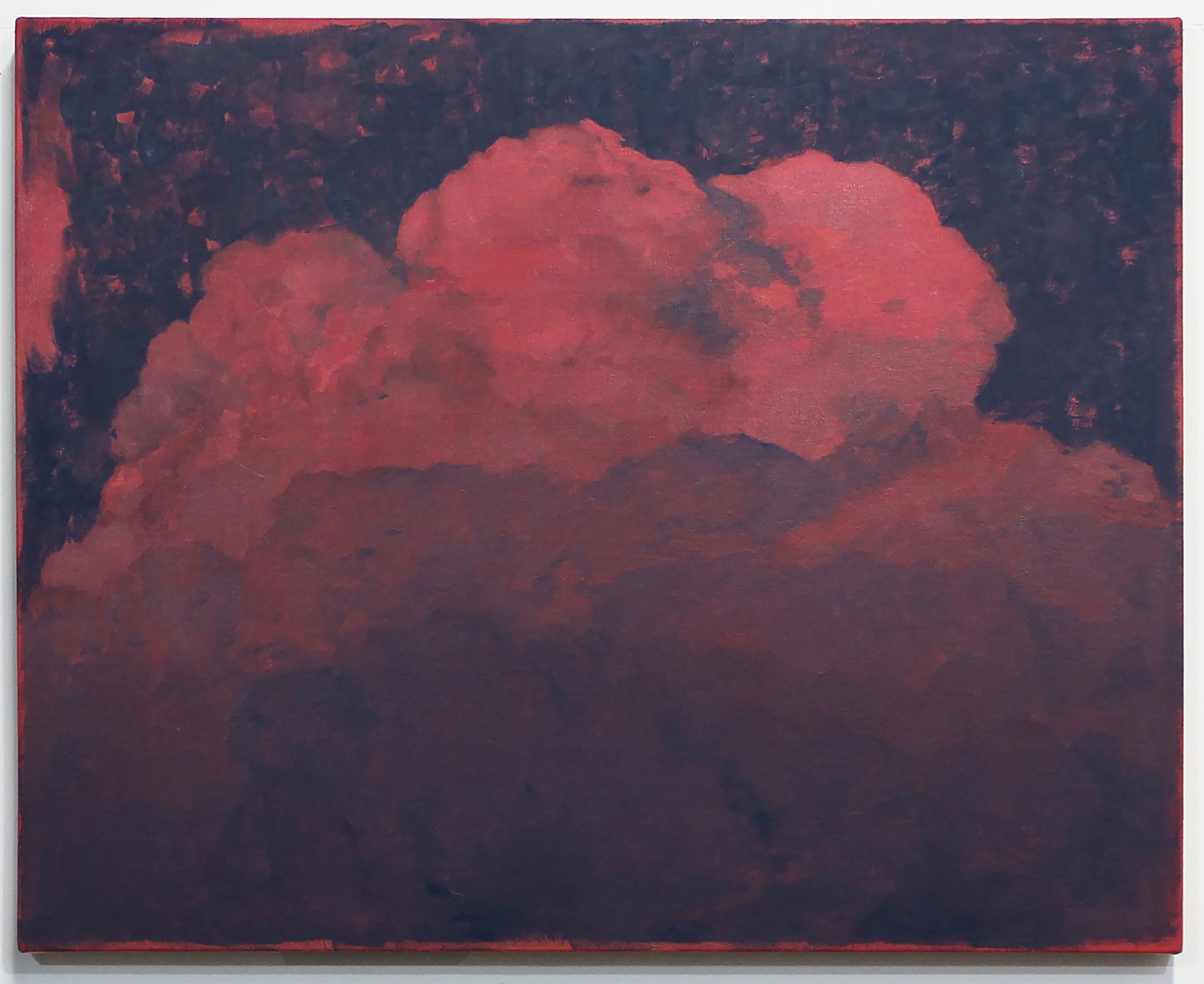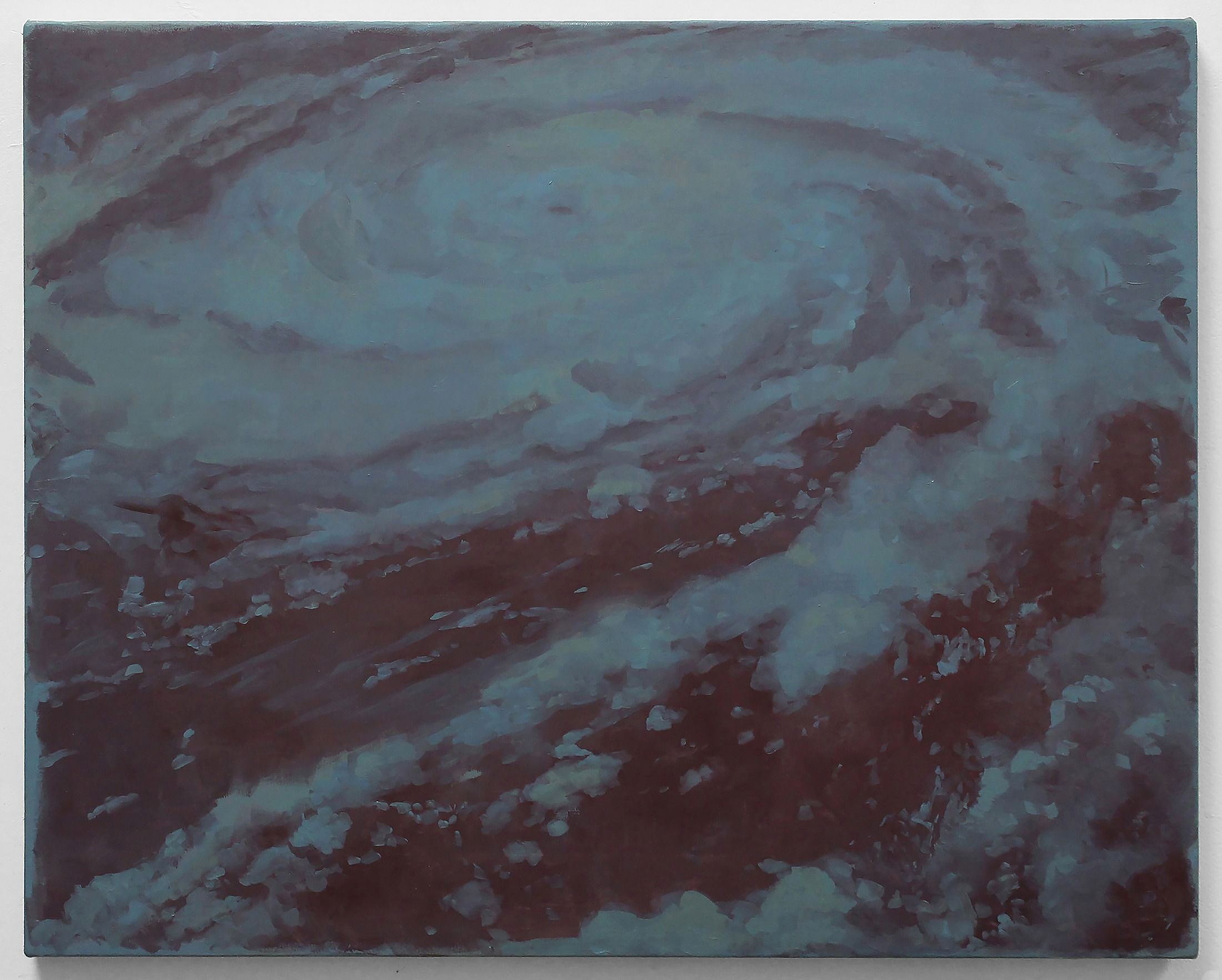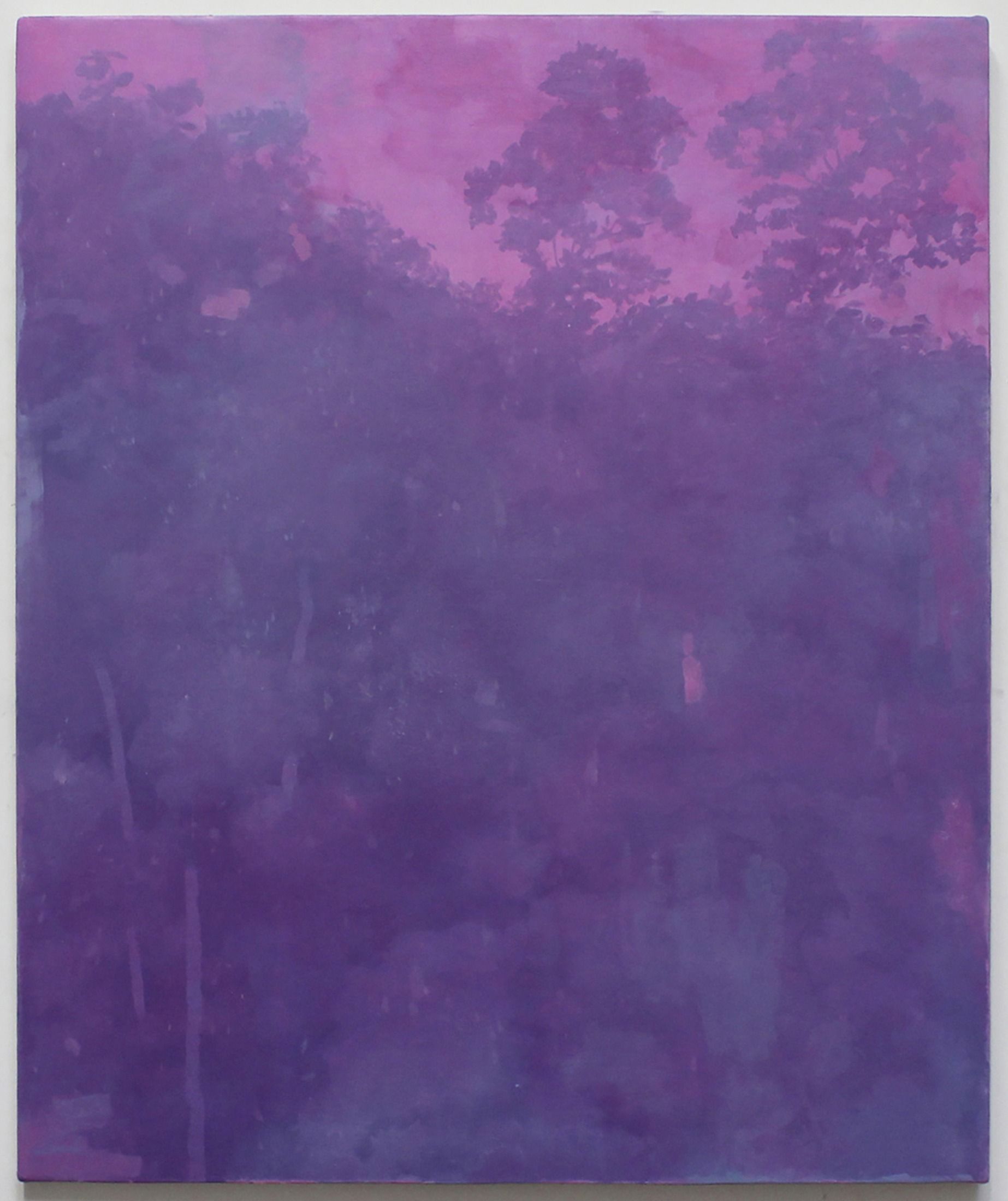Conversation with Braden Bandel
Interview with the recipient of the January edition of MyMA Artist Grant, Braden Bandel.
Congratulations on winning the MyMA January Grant, Braden! Can you tell us a bit about yourself and your practice?
Thank you, I am over the moon about it! Big thanks to Friend Of The Artist for selecting my work. I am originally from Kansas City now based in Brooklyn, NY. My recent work has been oil paintings; mostly landscape scenes with a keyed up, somewhat fantastical, color pallet. I’m interested in gothic and science fiction modes of depiction and storytelling, and related subjects – the psychological landscape, ruins, temporal paradoxes, weather as metonymy, etc. I am drawn to the fantastical, liminal, and sublime which are constant themes/sensations I evoke in my work.

You mentioned that you grew up in Kansas City. Does the idea of ‘home’ or place play a role in your work? Or, how has growing up in Kansas City influenced your practice?
For sure. I think it seeded my interest in weather and the landscape which are now main subjects in my studio. I think about those common idiomatic expressions and truisms with weather and landscape as their vehicle – “when it rains it pours”; “it comes in waves”, the brewing storm… My family lived in a tract housing development in a Kansas suburb, and I remember as a kid being at home during summer and hearing tornado warning sirens go off, then walking out to the porch and looking to the southwest where storms could be seen rolling in miles out. And I remember seeing all the neighbors stepping out to their porches to do the same, politely regarding one another across the distance of midwestern backyards between gazes into the clouds to search for rotation. When we were teenagers, my friends and I would pile into a car and go out searching for the storm, hoping to glimpse the tornado.

Wow, tornado chasing! What drove you to drive into a tornado (pun intended)? Is there a metaphor here somewhere that connects to your philosophy around art making?
Haha yes, you’ve got me thinking that maybe the impulse that had me chasing tornados is the same that caused me to pursue art as a career…So, when it comes to those expressions I mentioned, I’ve always felt a real visceral connection to the vehicle of those metaphors through those experiences – watching the storm approach, the rain, wind, thunder; the sudden shifts in temperature, humidity, and light. When someone says, “when it rains, it pours” to talk about many difficult circumstances arising at once, although it’s such a common cliche phrase, on the right day it hits me like the profound poetry that it actually is. And I think that sort of thing is a somewhat secret ambition in my and many other artists’ work – to breathe new life into these old truths so they aren’t perceived as just cliches, but new and relevant.

Your practice is so connected to the natural world as well as to the history of landscape. Yet your pallet is almost the opposite of natural. How did you go about creating your pallet? How would you describe it?
Color and atmosphere are so important when it comes to the overall mood and feeling of a painting, so I put a lot of focus into that. Most of my time painting is spent mixing color trying to figure out how to create the specific type of light I am looking for. For a while I was really into twilight, trying to describe the optical conditions of that specific time in my pallet; wanting to capture its liminal, sort of magical quality. I stuck with that pallet for a while then started experimenting with how far I could push the color, like, what if instead of the blue light of twilight the light in the painting is bright pink, etc. That created an overlay that I find interesting, where the paintings are scenes of nature, but they are depicted in a keyed up artificial light. I think points of tension like that are often what make paintings interesting.

What do you hope audiences will take away from your work?
When people have told me what interests them about my work, they describe a somewhat conflicted feeling they get looking at it. They often say they get a sense of calm or serenity from the painting, but this sense of calm is tempering an underlying sense of anxiety or doom. I like this reading/response to the work. Some people have told me they just feel calm when looking at one of my paintings and I’m totally happy with that too. I work fairly intuitively and go for an overall feeling or vibe in the painting, keeping it pretty simple in some ways; but there is plenty more there if the viewer wants to dig in and unpack it further. I want my paintings to operate well in both ways – rewarding both a fast and slow read.

A little birdie told us you share a studio with your fiance, who is also a very talented artist. What is it like sharing a creative space with a loved one? Do you find your work becomes in discussion with one another?
Haha thanks yeah Patricia and I have shared a studio periodically since we started dating. I’d say if we have to share studios with someone it works out great that we have each other for that. We admire each other’s work but are also pretty honest and opinionated with what we think about the other’s work, so it can be helpful in that way. Plus, we can feel free to complain if one of us is messy or is taking up too much space; we can be each other’s studio assistants when needed, etc. It’s nice. Our work is quite different, but we’ve been working in the same room for long enough that there’s started to be some crossover with some simple things like the colors we’re using and size we’re working at.

Who are some of your influences? Were there any artists, movements, or cultural phenomena that had a significant impact on your artistic development?
I have had a lot of great teachers and I consider them a big influence. There are many painters I admire but recently I’ve been most influenced by filmmakers like Denis Villeneuve (Blade Runner 2049 and the Dune movies); Dario Argento (Susperia); Nicolas Winding Refn (Drive).
